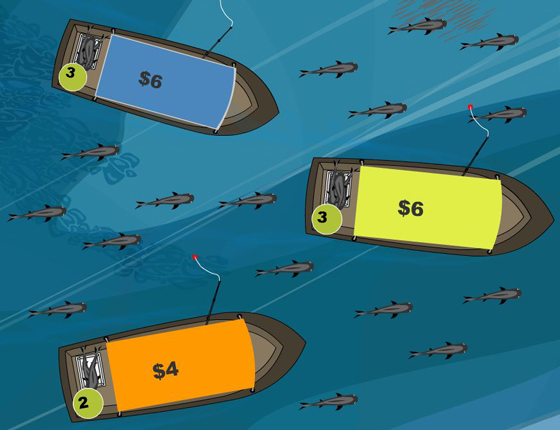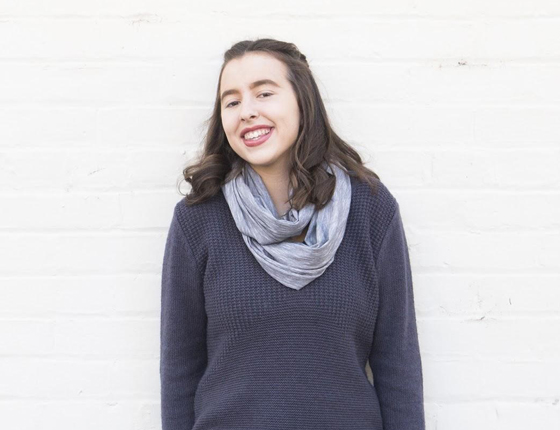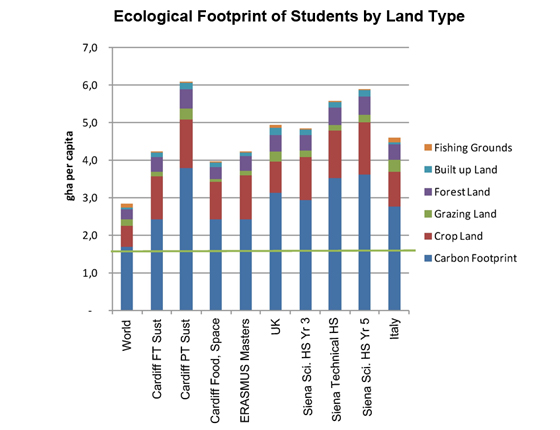Educational Resources
Students around the world learn about the Ecological Footprint in elementary, secondary, and university classrooms.EUSTEPs Module
The EUSTEPs (Enhancing Universities’ Sustainability TEaching and Practices) module, available for free in four languages, embraces a hands-on, experiential, interdisciplinary approach to sustainability teaching , including a calculator. The UN Sustainable Development Solutions Network selected EUSTEPs as an innovative and inspiring example for its 2021 Accelerating Education for the SDGs in Universities guide.
“Learning about Ecological Footprint really opened up my mind on available tools to measure our pressure on the planet. … The [EUSTEPs] module helped me reflect not only on my daily choices, but also on the possibility to use the Ecological Footprint as an instrument to raise awareness and engage other people, too.”
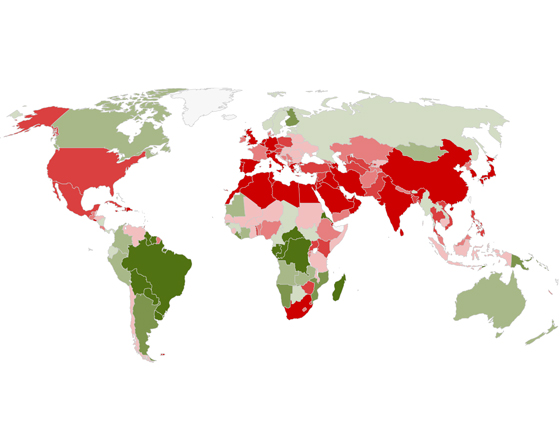
Footprint Explorer Open Data Platform
Our Ecological Footprint Explorer opens up our National Footprint and Biocapacity Accounts data for anyone to explore and download. Updated every year, the National Footprint and Biocapacity Accounts track human demand and nature’s capacity to meet that demand for more than 200 nations. Educators can use the data platform in lesson plans on sustainability as well as statistics.
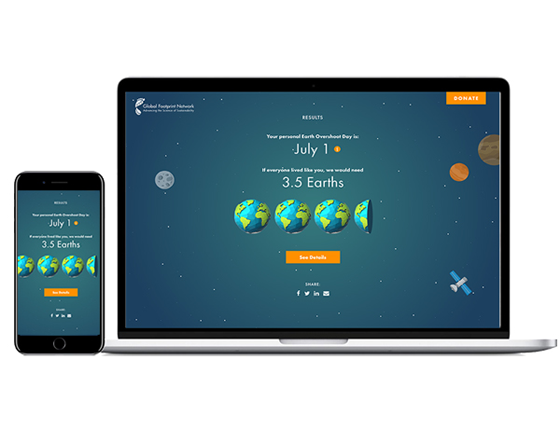
Footprint Calculator
From sociology to ecology, students in a wide variety of classes are assigned to use our online Calculator to measure their personal Ecological Footprints, discover their biggest areas of resource consumption, and learn what they can do to tread more lightly on the Earth. It’s now available in eight languages and works on mobile devices!
Footprint Calculator is an eye opener - Project Green Challenge Winner
This is a guest post from our partners at Turning Green, a global student-led movement devoted to cultivating a healthy, just and thriving planet through education and advocacy around environmentally... More ›New Study Highlights Educational Benefits of Footprint Calculator
A new study of the Ecological Footprint Calculator used in classrooms in Italy and the UK identified several educational benefits, including making sustainability personal for students and providing insight... More ›Ecotourism Course
IUCN Med, Global Footprint Network and the MEET Network, with support from MAVA Foundation, developed a free online course teaching the participatory process of creating ecotourism experiences in and around Mediterranean Protected Areas. Course attendees are also introduced to the concept of the Ecological Footprint and learn how it is used to support ecotourism development and monitoring.

Footprint Futures Module
Footprint Futures is a university-level teaching module for exploring the sustainability challenge facing human economies. The module consists of a student-driven exploration into what the optimal scale of material demand is for a national economy, using real country examples. More specifically, it asks: What would be a given country’s optimal Footprint compared to the country’s biocapacity by 2050?
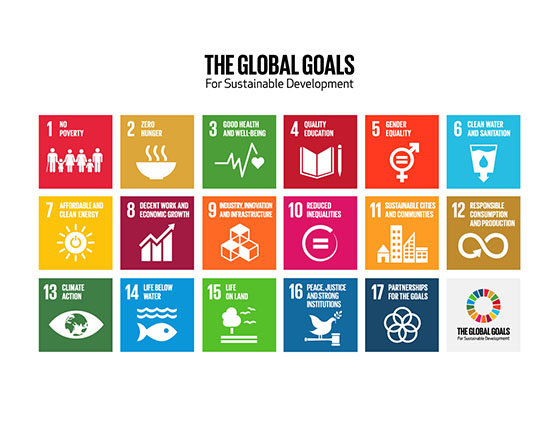
Understanding Sustainable Living
The World’s Largest Lesson is a collection of lesson plans and other teaching resources related to the 17 Sustainable Development Goals approved by world leaders in 2015 to to end extreme poverty, fight inequality and injustice, and stem climate change. The Understanding Sustainable Living lesson was developed for ages 11-14 to address goal #12, Responsible Consumption and Production. The lesson plan features the Footprint calculator and profiles of four children around the world for class discussion.
Activities
Hands-on activities and videos to learn about the Ecological Footprint, climate change, and what we can do to create a sustainable planet.
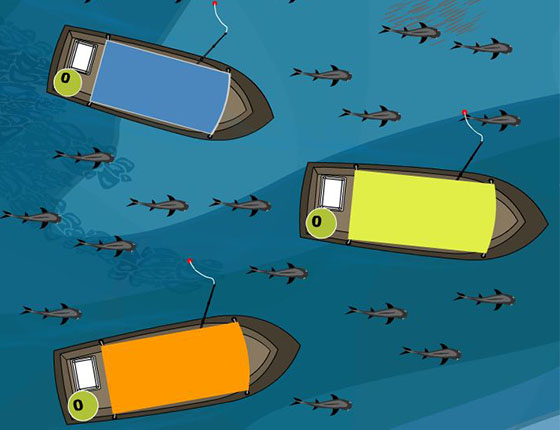
The Fish Game
You have 10 days to catch as many fish as you can. The money you make from these fish will need to support your family for the next month. Each fish nets $2. The Fish Game, created by the Cloud Institute for Sustainability Education, helps kids and adults better understand resource constraints and sustainability. Play the game online and find out how to make the most out of your resources!
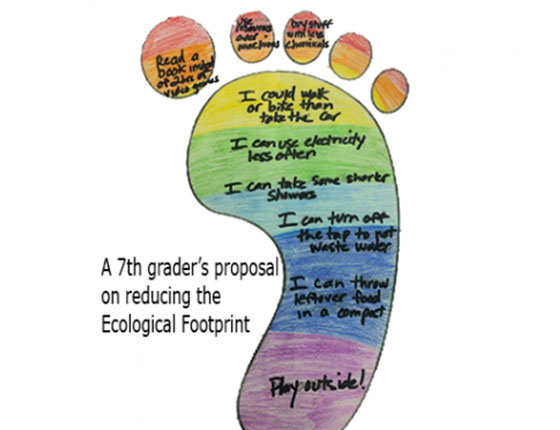
More Fun Activities
Footprint Drawing: Suggest ways to reduce your Ecological Footprint in a drawing like the one by a seventh grader at left.
Recycling Game: Play a game and learn the basics of recycling.
Listen to the Earth activities: The concept of Earth Overshoot Day is featured in children’s book Listen to the Earth. Visit the author’s website to download free activities based on the book, including a coloring page and puzzles.
Videos
Watch videos about the Ecological Footprint, climate change, natural resources, and more. Our curated collection features a TEDx talk, Bill Nye, Concerned Kittens, and National Geographic Kids.
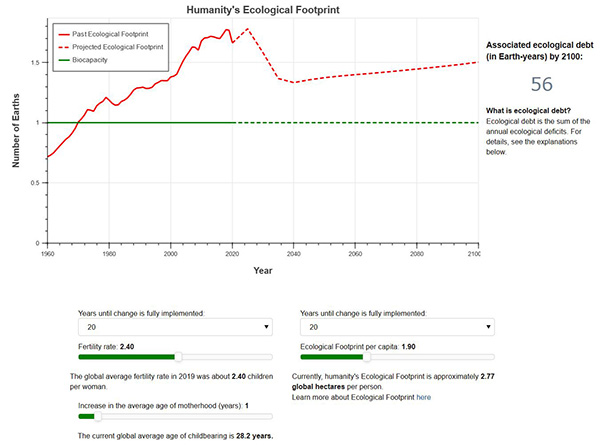
Design Possible Futures
Play with our global Footprint scenario tool and design possible futures for humanity. Choose key parameters that shape overshoot: how much each of us use, how many of us there are on the planet, and how quickly changes in consumption and family size are implemented. The tool then displays how your choices would affect humanity’s trajectory.
Additional Resources
- The Ecological Footprint: Managing our Biocapacity Budget book is available to order in the US here and for other countries here.
- Teaching Sustainability curriculum from Vanderbilt University Center for Teaching.
- Engage students in learning conservation techniques at home and at school with a lesson plan from the National Wildlife Federation for grades 4-6.
- Find out what’s causing sea-level rise in a classroom activity from NASA for grades 2-8.
- Graph global temperature trends with NASA’s Classroom Activity for grades 5-12.
- Manage your energy budget with a lesson from PBS LearningMedia for grades 6-12.
- Terracycle curriculum lesson sets from The Cloud Institute for Sustainability Education.
Resources from Germany
- German website on nature and the environment for children from Bundesministerium für Umwelt, Naturschutz, Bau und Reaktorsicherheit (BMUB).
- Weekly teaching lessons on timely environmental topics from BMUB.



